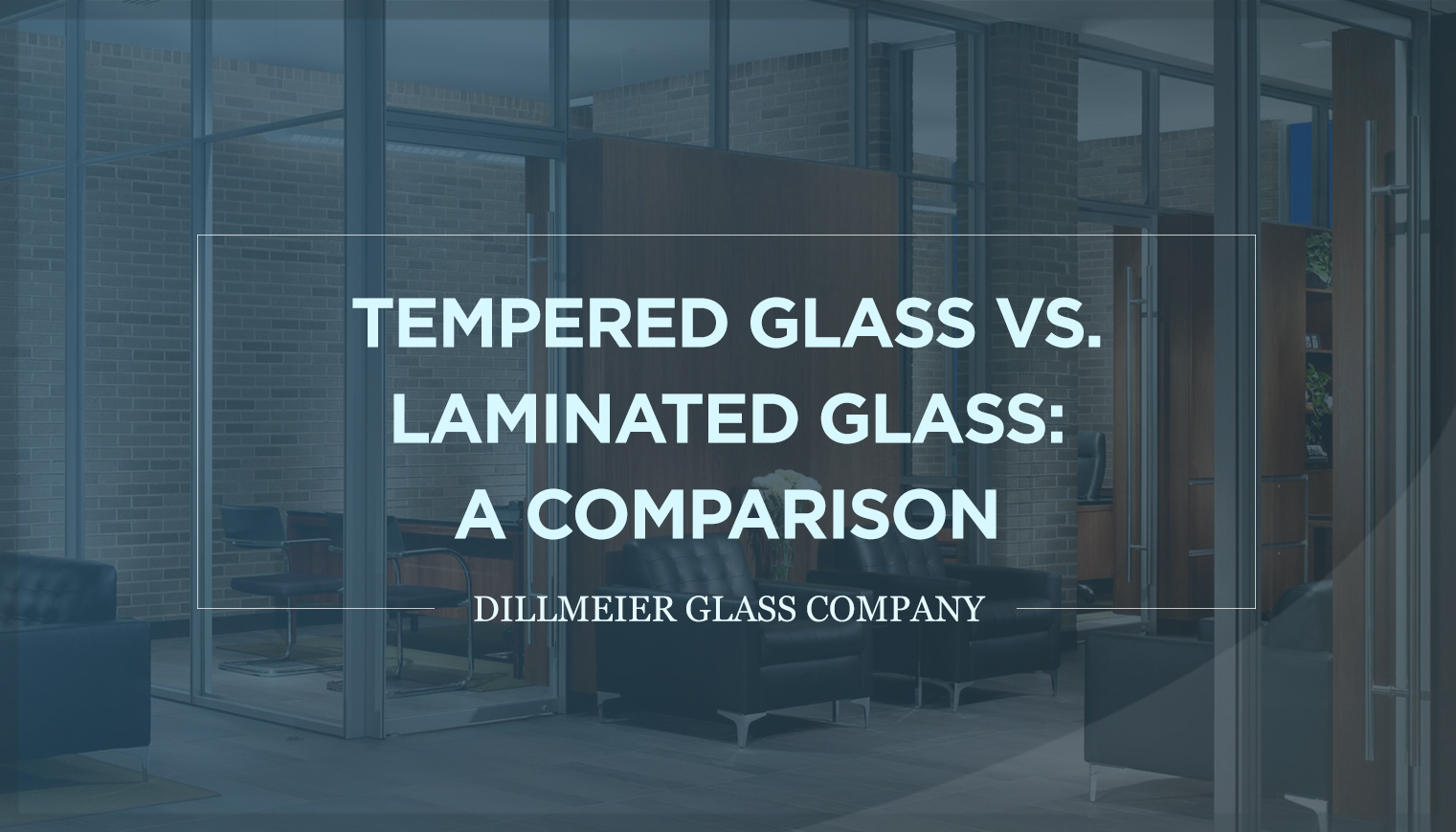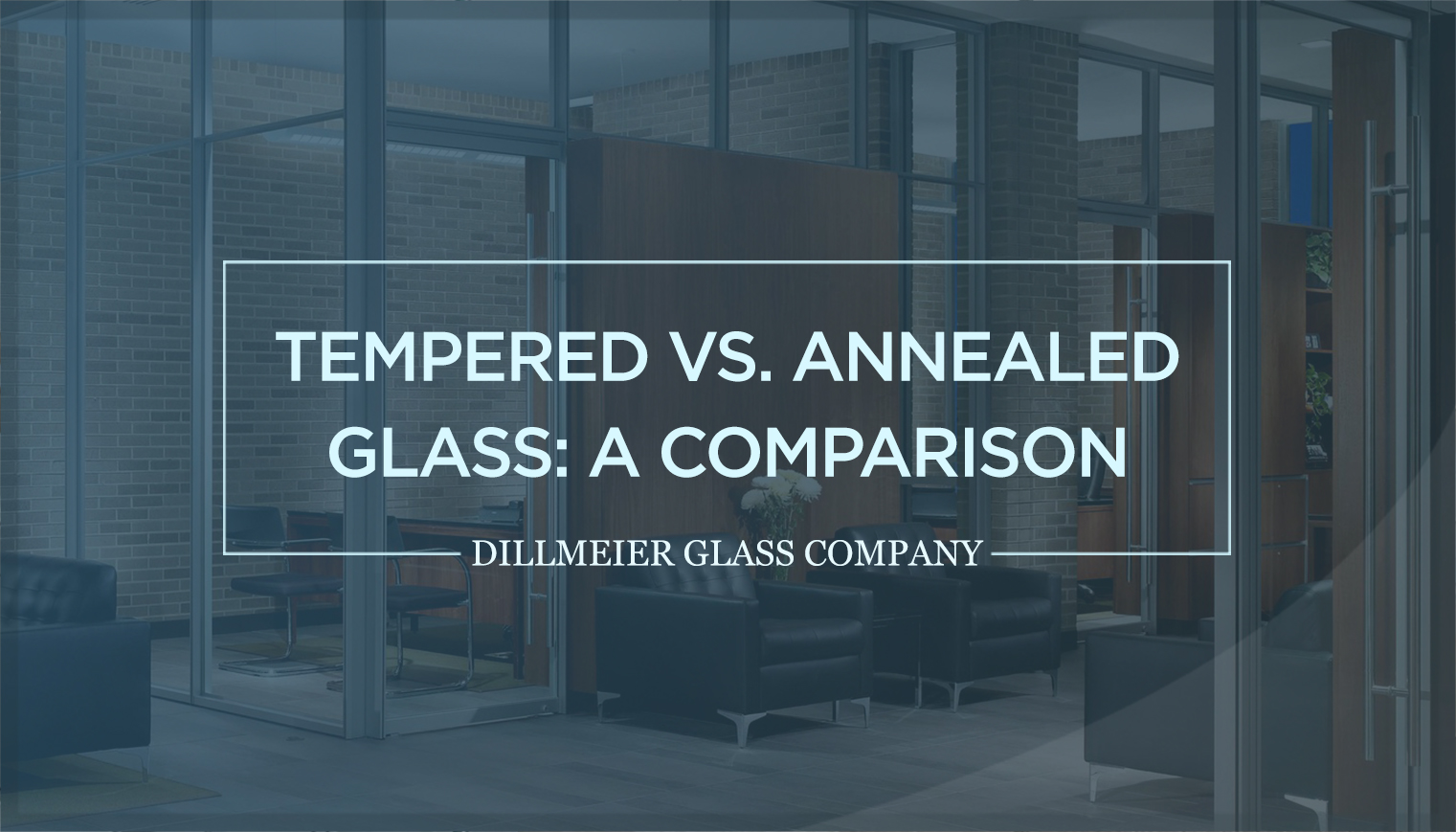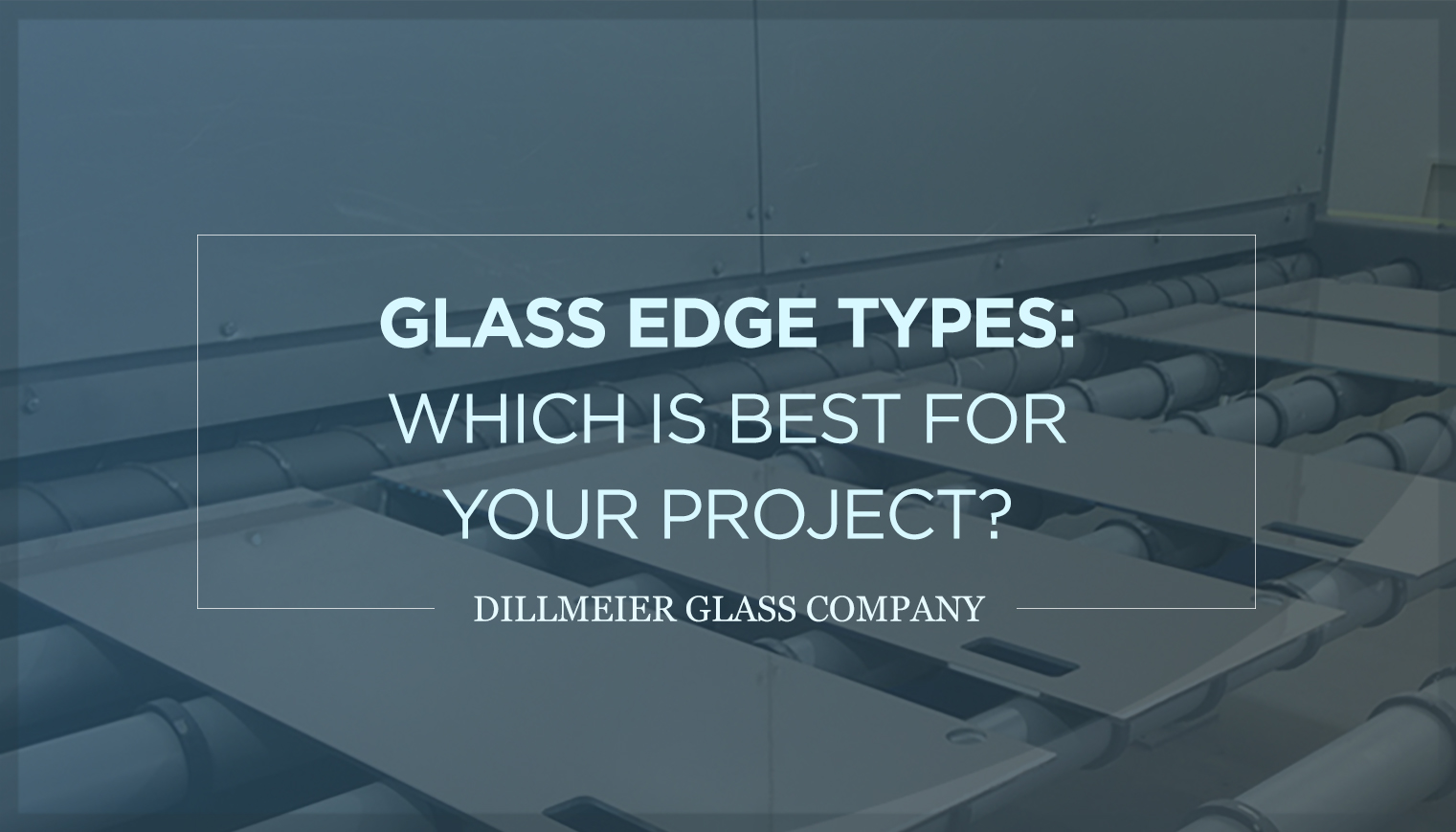Tempered Glass vs. Laminated Glass: A Comparison

When it comes to glass for safety and protection, either tempered or laminated glass is appropriate. Both are strong, durable, shatter resistant, and undergo specialized fabrication.
But how do you decide which is best for your project?
Considerations include where the glass will be used, application type, specific benefits, and what you want to achieve.
Safety measures aside, both types provide decorative elements with high-level protection, while maintaining feature-rich designs.
Below is an explainer about each glass type’s safety and design elements, pros and cons, applications, and more:
Safety Requirements
Regulations dictate whether laminated or tempered glass can be utilized. According to the National Glass Association, safety glass is required in the following scenarios:
- The size of the glazed opening exceeds 9 square feet.
- The bottom of the glazing occurs within 18 inches of the floor or horizontal surface below.
- The top of the glazing occurs at least 36 inches above the floor or horizontal surface below.
- There is a walking surface within 36 inches of the glazing.
Tempered Glass
Also known as toughened glass, this is clear before undergoing a specialized tempering process. Fabricators, such as Dillmeier Glass Company, conduct this to qualify for safety designations.
The tempering process involves heating and quick-cooling glass; this rapid hardening strengthens the glass and makes it more durable.
A fabricator performs an air-quenching process, whereby pre-cut and -edged glass undergoes rapid heating and cooling through air jets in a tempering furnace. This is followed by chemical treatment.
According to trends and techniques research platform Glass Academy, following the aforementioned steps: “the mechanical strength of tempered glass is four to five times higher than that of annealed glass.”
While safety glass lowers the chance of breakage, accidents, and other elements will occur. Should tempered glass shatter, it results in small, pebble-like shards, rather than sharp edges.
Tempering reduces the chance of serious injury, but it must be executed by an experienced fabricator. Skipping this step could result in spontaneous breakage, stress damage, and other imperfections. If the glass isn’t properly edged and packed by a glass fabricator, damage could occur, even before shipment and delivery.
Tempered glass boasts a higher bend threshold, and thus is used to construct large commercial buildings in areas experiencing severe weather.
It also costs slightly less than laminated glass.
Applications
Tempered glass is best suited for commercial interior applications, such as hotel shower enclosures and doors, retail display cases, sports arenas, office partitions and doors, windows, railings, conference rooms, and furniture, such as glass tabletops.
It is also used in several specialized applications, such as:
Sneeze Guards
Also known as glass dividers, these were traditionally used in self-service restaurants. They’re widely used in retail settings, such as grocery stores, pharmacies, and post offices.
Display Cases
Tempered glass withstands smash-and-grab attacks prevalent in high-end retail. Dillmeier Glass combats this with a specialized UV-bonded tempered glass process.
Pros
- Shatter & Scratch Resistant
- Durable
- Withstands Temperatures Up to 470 Degrees Fahrenheit
- Won’t Bend Under Pressure
- Can Be Specially Fabricated
- Cost-Effective
Cons
- Lower-Quality Glass Will Scratch
- Can’t Be Repaired
- Alterations Can’t Be Made After Tempering
Laminated Glass
This is produced with two pieces of regular or tempered glass sandwiched between clear plastic resin—polyvinyl butyral (PVB). Should breakage occur, all layers are held together, instead of shattering into pieces or pebbles.
Laminated glass is created through a process comparable to tempering. The glass is customized to meet client specifications, before undergoing design, cutting, and shaping. It’s then run through specialized washing machines, designed to reduce large pane gaps.
After being prepared, the panes are carefully transferred to a temperature-controlled, debris-free clean room where they are subjected to heat and constriction, eliminating air pockets between layers. The controlled application of heat and pressure also ensures transparency.
Laminated glass also provides wellness and productivity benefits, blocking damaging UV rays while still facilitating natural light for less stress and increased creativity.
Many designers opt for colored laminated glass. This involves a heated pigmentation process mixed with tinted glass and coatings. The aforementioned natural, bright appearance can be achieved with colored and transparent laminated glass.
Applications
Laminated glass is often used in office or hotel settings because of natural light and soundproofing elements. Other applications include frameless glass doors and railings, skylights, and balconies. It’s also ideal for glass flooring, windows, and windshields.
Digital Design
This material’s aforementioned sandwiched interlayer gives designers creative freedom to incorporate digital tools for visual glass imaging and photography. Its clear plastic elements can facilitate this component for decorative interior or exterior glass.
Public Safety
This material’s bullet-proof strength is a popular choice with many police departments, public safety entities, schools and other areas where security is paramount.
Pros
- Holds Together if Shattered
- Sound Reduction Properties
- UV Ray Protection
- Improved Energy Efficiency
- Withstands Severe Weather
- Easy Installation
Cons
- Can Be More Expensive Than Tempered Glass
- Lack of Manufacturers Offers Less Choices
- Requires Longer Lead Times
Making the Perfect Choice
Whether you decide on tempered or laminated glass, it’s critical to work with an expert fabricator who has the necessary equipment and production processes for your application.
Dillmeier Glass Company offers an unwavering commitment to precision, quality, and customer satisfaction.
Contact Dillmeier today to learn whether tempered or laminated glass is best for your project.


